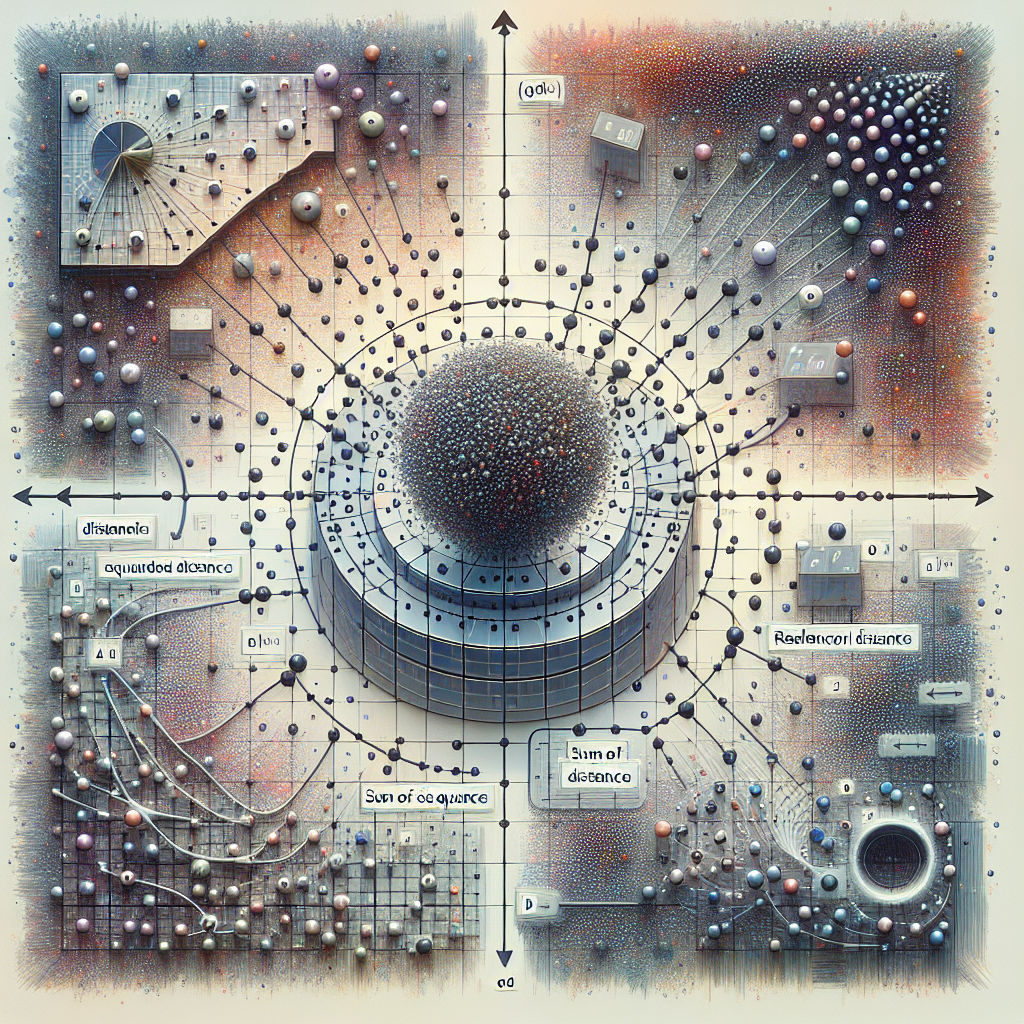In the realm of machine learning, loss functions play a pivotal role. They serve as the guiding light for algorithms, steering them towards optimal learning from data.
Understanding loss functions is crucial for anyone delving into machine learning. Whether you’re a seasoned data scientist, an AI researcher, or an advanced computer science student, this knowledge is indispensable.
This article aims to shed light on the intricacies of loss functions. We will explore their purpose, their different types, and their implementation in machine learning models.
We will also delve into the specifics of TensorFlow custom loss functions. Furthermore, we will discuss the Huber loss function and its advantages in certain scenarios.
Our goal is to provide a comprehensive understanding of loss functions. We aim to equip you with the knowledge to improve your machine learning models’ performance.
Understanding Loss Functions in Machine Learning
Loss functions, also known as cost functions, are a cornerstone of machine learning. They are mathematical methods used to estimate the errors or ‘loss’ of a model during the learning process.
These functions quantify the difference between the predicted outcome and the actual outcome. The larger the difference, the greater the error, and thus, the higher the loss. This loss is what machine learning models strive to minimize.
Loss functions are not one-size-fits-all. Different types of loss functions are used depending on the specific machine-learning task at hand. For instance, regression tasks might use Mean Squared Error (MSE), while classification tasks might use Cross-Entropy.
Understanding loss functions and their role in machine learning is crucial. It allows practitioners to guide their models towards better performance and more accurate predictions.
Defining Loss Functions and Their Purpose
A loss function, in the simplest terms, is a measure of how well a machine learning model is performing. It quantifies the discrepancy between the model’s predictions and the actual data.
The purpose of a loss function is to guide the learning algorithm. It does this by providing a clear measure of the model’s performance. This measure is then used to adjust the model’s parameters during training.
The goal of any machine learning model is to minimize the loss function. This is achieved through an iterative process of adjusting the model’s parameters, calculating the loss, and then making further adjustments.
Different types of loss functions are used for different types of machine learning tasks. For example, regression tasks often use the Mean Squared Error (MSE) loss function, while classification tasks often use the Cross-Entropy loss function.
Choosing the right loss function for a given task is crucial. It can significantly impact the model’s performance and the speed at which it learns.
Quantifying Prediction Errors: How Loss Functions Work
Loss functions work by quantifying the error in a model’s predictions. They do this by comparing the model’s predicted output with the actual output.
For example, in a regression task, the model might predict a continuous value, such as the price of a house. The loss function would then calculate the difference between the predicted price and the actual price.
This difference, or error, is then squared in the case of the Mean Squared Error (MSE) loss function. The squaring ensures that all errors are positive and that larger errors have a greater impact on the total loss.
The loss function is calculated for each instance in the training data. The average loss across all instances gives an overall measure of the model’s performance.
The goal of the learning algorithm is to adjust the model’s parameters to minimize this average loss. This is typically achieved using an optimization algorithm like gradient descent.
The Impact of Loss Functions on Model Training and Optimization
Loss functions play a crucial role in the training and optimization of machine learning models. They provide a measure of the model’s performance that can be used to adjust the model’s parameters.
During training, the model’s parameters are adjusted to minimize the loss function. This is typically done using an optimization algorithm like gradient descent.
The loss function also plays a role in preventing overfitting. Overfitting occurs when a model learns the training data too well, to the point where it performs poorly on new, unseen data. Regularization techniques, which add a penalty to the loss function for complex models, can help prevent overfitting.
Choosing the right loss function is crucial for effective model training and optimization. The loss function must align with the goals of the machine learning task and the nature of the data.
Different loss functions can lead to different model behaviors. Therefore, understanding the impact of loss functions on model training and optimization is a key skill for any machine learning practitioner.
Types of Loss Functions and Their Applications
There are several types of loss functions used in machine learning, each with its own strengths and weaknesses. The choice of loss function depends on the specific task at hand, the nature of the data, and the goals of the model.
Some common types of loss functions include Mean Squared Error (MSE) for regression tasks, Cross-Entropy for classification tasks, and Huber loss which combines the strengths of MSE and Mean Absolute Error (MAE). Let’s delve into these in more detail.
Mean Squared Error (MSE) and Regression Models
Mean Squared Error (MSE) is a popular loss function used in regression tasks. It calculates the average of the squared differences between the predicted and actual values.
The squaring operation ensures that all errors are positive and that larger errors have a greater impact on the total loss. This makes MSE sensitive to outliers in the data.
MSE is often used in linear regression models, where the goal is to minimize the sum of the squared errors. This leads to a line of best fit that minimizes the distance between the line and the data points.
Cross-Entropy Loss and Classification Tasks
Cross-entropy loss, also known as log loss, is commonly used in classification tasks. It measures the dissimilarity between the model’s predicted probability distribution and the actual distribution.
In binary classification, for example, the model predicts a probability for the positive class. The Cross-Entropy loss then measures the distance between this predicted probability and the actual class (0 or 1).
Cross-entropy loss is particularly useful for classification tasks because it heavily penalizes confident and wrong predictions. This makes the model more cautious in making confident predictions unless it’s sure.
Huber Loss Function: Combining MSE and MAE
The Huber loss function is a less common but useful loss function that combines the strengths of Mean Squared Error (MSE) and Mean Absolute Error (MAE).
For small errors, Huber loss behaves like MSE, and for large errors, it behaves like MAE. This makes it less sensitive to outliers than MSE, while still maintaining a nice mathematical property of being differentiable at 0.
The Huber loss function has a parameter, delta, which determines the point at which the loss function transitions from MSE to MAE. This allows the model to be more robust to outliers while still maintaining efficiency in optimization.
Implementing Custom Loss Functions in TensorFlow
While standard loss functions like MSE and Cross-Entropy are widely used, there are situations where a custom loss function can improve model performance. TensorFlow, a popular machine learning library, allows for the implementation of custom loss functions.
Custom loss functions in TensorFlow can be tailored to the specific needs of a machine learning task. They can incorporate domain knowledge, handle imbalanced datasets, or optimize for specific metrics.
Step-by-Step Guide to TensorFlow Custom Loss Functions
Creating a custom loss function in TensorFlow involves defining a new function that takes the true and predicted values as inputs and returns a scalar value representing the loss.
The first step is to import the necessary TensorFlow libraries. Then, define the custom loss function. This function should take two arguments: the true values (y_true) and the model’s predictions (y_pred).
The body of the function calculates the loss based on these inputs. This could involve simple operations like subtraction and squaring, or more complex calculations tailored to the specific task.
Once the function is defined, it can be used in the model’s compile method, just like a standard loss function. The model can then be trained as usual, with the custom loss function guiding the optimization process.
Case Studies: Improving Model Performance with Custom Loss Functions
Custom loss functions have been used to improve model performance in a variety of machine-learning tasks. For example, in a regression task with the heavy-tailed distribution of errors, a custom loss function that is less sensitive to outliers can lead to better performance.
In another case, a custom loss function was used in a classification task to handle imbalanced data. The loss function was designed to give more weight to the minority class, improving the model’s sensitivity to this class.
In a third case, a custom loss function was used to incorporate domain knowledge into a model. The loss function was designed to penalize errors in a way that reflected the real-world costs of these errors, leading to a model that was better aligned with business objectives.
These case studies illustrate the potential of custom loss functions to improve model performance by tailoring the loss function to the specific needs of the task.
Advanced Topics in Loss Functions
Loss functions are not limited to simple regression or classification tasks. They play a crucial role in more complex machine learning paradigms, such as deep learning and unsupervised learning.
In these advanced contexts, the choice of loss function can significantly impact the model’s ability to learn complex patterns and generalize to unseen data.
Loss Functions for Deep Learning and Neural Networks
In deep learning, loss functions guide the training of neural networks. These networks can have millions of parameters, making the choice of loss function critical for efficient learning.
Commonly used loss functions in deep learning include Cross-Entropy for classification tasks and Mean Squared Error for regression tasks. However, more complex loss functions, such as the Hinge loss for support vector machines or the Kullback-Leibler divergence for probabilistic models, are also used.
Loss Functions in Unsupervised and Reinforcement Learning
In unsupervised learning, where there are no target labels, loss functions are used to measure the quality of the learned representations. For example, in clustering, a common loss function is the sum of squared distances from each data point to its cluster center.
In reinforcement learning, the loss function often represents the difference between the predicted and actual rewards. This guides the agent to learn policies that maximize the cumulative reward.
The Evolving Landscape of Loss Functions in AI
The field of machine learning is rapidly evolving, and with it, the role and design of loss functions. As we develop more complex models and tackle more challenging tasks, the need for sophisticated and tailored loss functions becomes increasingly apparent.
From guiding the training of deep neural networks to enabling unsupervised learning and reinforcement learning, loss functions are at the heart of machine learning. As we continue to push the boundaries of AI, the design and understanding of loss functions will remain a critical area of research and innovation.
















































